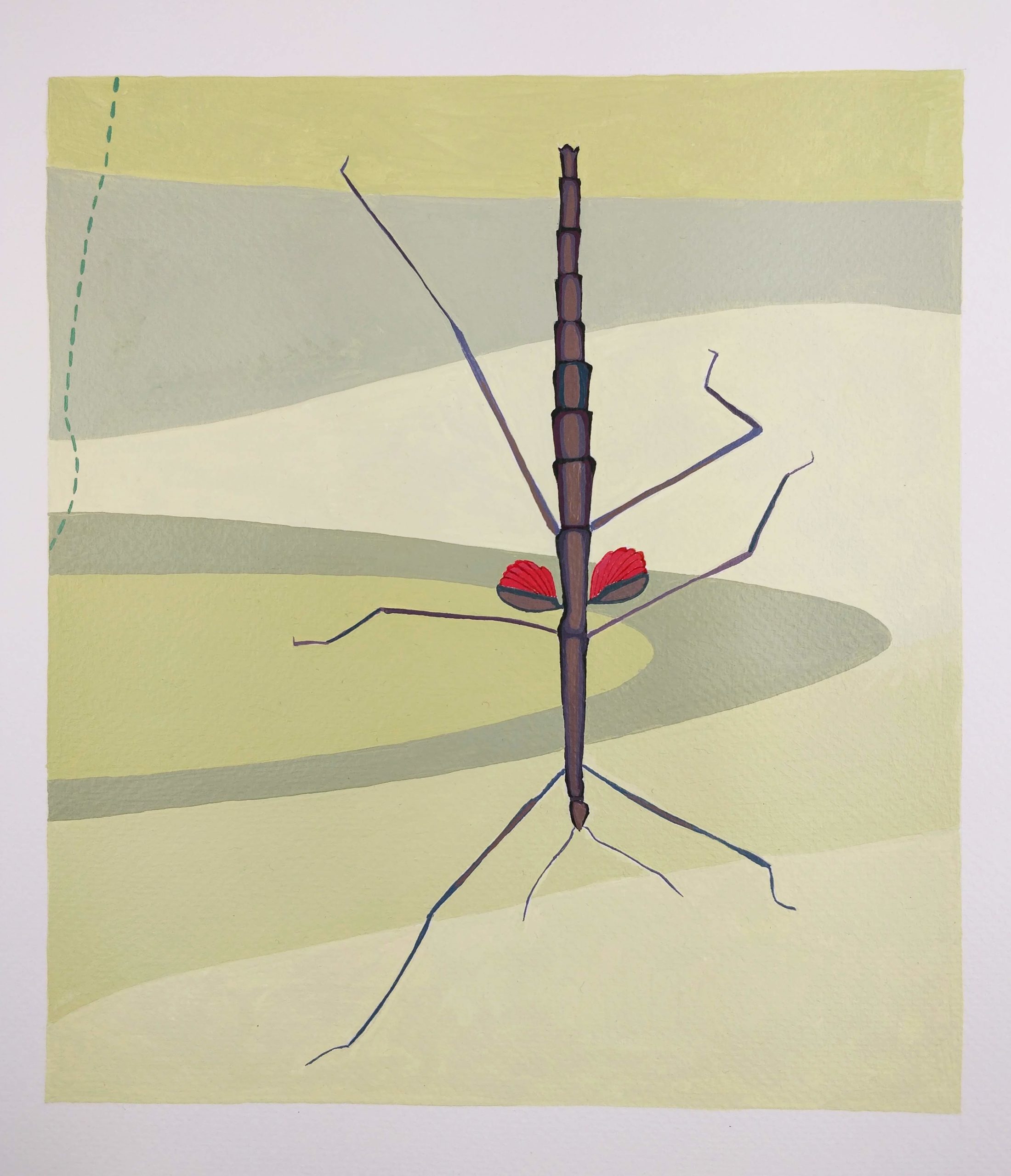
In certain countries a stick insect may be a novelty, but not in southern Africa where they are quite common. What could be more ordinary than such a creature? After all, stick insects look just like a small stick, and thus intentionally elude our, or other predators’, notice. However, the South African/UK artist Walter Hayn did take note, resulting in this exquisite piece of work. As Walter tells the story, some years ago when he was doing his national service in the South African military, he was based in Namibia. He and his fellow soldiers lived in tents, amidst the sort of stifling heat common in Africa. Each day the window flaps were unhooked, allowing a welcome breeze to blow through. As happens in Africa, numerous small wildlife welcomed the opportunity to pay a visit. Mosquitoes, scorpions and a myriad of other small flying beetles and moths were the regulars, but one morning a large stick insect, about 30 cm long, appeared on the underside of their tent roof. Stick insects are not normally so very long, and, bemused, they left it alone and observed it for days.
After a while it hardly seemed to move. Finally, thinking that maybe it was dead, one of Walter’s colleagues poked it with a stick. Suddenly it jerked into action and out of its monochromatic body popped tiny but incredibly vivid red wings.
Walter says of this artwork: “I have tried to capture this slightly surreal and dreamlike memory here. Strangely it reminds me of the crucifixion story. Christ was poked to see if he was still alive while hanging on the wooden stick/cross, and out of his side flowed blood and water.” The painting does indeed have a dreamlike quality with the sombre greens and greys circling around, but, I suggest, there is far more going on in this work than that.
At the heart of healthy Christian spirituality is the insight that God’s glory is manifest in the ordinary, so that we are always, already, standing on holy ground. The problem is that far too often we do not have eyes to see. This humble stick insect is an invitation to open our eyes and to learn to see. As Gerard Manley Hopkins would remind us, Christ plays in ten thousand places, and Walter enables us to see that one such place is in this stick insect. Walter’s memory is not a dream but a true seeing, and this painting, like all good art, invites us to see too.
Most of us live amidst the humble glories of God’s creation in a dreamlike state, oblivious to the handiwork of God in which we are immersed. Too much contemporary Christianity detracts from the creation, whereas healthy spirituality brings it gloriously into focus as God’s creation. Walter rightly connects this work with Christ’s crucifixion, his searing death to save the creation from sin and judgement, including the humble stick insect. This reminds me of Rembrandt’s depiction of the risen Christ as a gardener, which, as the second Adam, he surely is.
The Kirby Laing Centre for Public Theology in Cambridge. Charity registered in England and Wales. Charity Number: 1191741
Kirby Laing Centre, The New Mill House, Unit 1, Chesterton Mill, French’s Road, Cambridge, CB4 3NP
© 2022 The Kirby Laing Centre for Public Theology in Cambridge